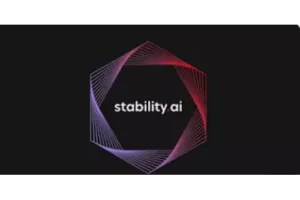
In a groundbreaking development, researchers from universities in New York and Ningbo, China, have successfully created 3D DNA nanorobots capable of self-replication, opening new frontiers in nanotechnology with potential applications in medicine and environmental cleanup.
These nanorobots, measuring a mere 100 nanometers in width, have the ability to perform intricate tasks autonomously. Lead researcher Feng Zhou, affiliated with New York University’s Department of Physics and the Chinese Academy of Sciences, highlighted the potential of these nanorobots in nanomanufacturing, envisioning their role in precise and automated tasks, such as combating cancer cells within the human bloodstream or collecting toxic waste from the oceans.
Self-Replicating Mechanism of DNA Nanorobots
The innovation lies in the DNA nanorobots’ three-dimensional construction, allowing for limitless self-replication. Zhou explained that the mechanisms manipulate different parts of DNA strands, aligning them accurately for welding before progressing to the next step. Unlike previous research limited to two-dimensional structures, this breakthrough introduces multiple-axis precise folding and positioning, paving the way for more complex and functional nanodevices.
Andrew Surman, a nanomaterials specialist, acknowledged the challenges of assembling such nanorobots. The precision in folding DNA is crucial for their functionality, and this research addresses that aspect, pushing the boundaries of DNA nanotechnology.
The potential applications extend beyond medical realms. Richard Handy from the University of Plymouth suggested that these DNA nanorobots could be a revolutionary therapy for individuals with genetic deficiencies, envisioning a scenario where the nanorobots construct enzymes or proteins in tissues, offering solutions for conditions like Type 2 diabetes.
While the field of nanotechnology has long been associated with both hope and caution, Zhou emphasized that their work builds upon decades of DNA nanotechnology advancements, from machines and enzymes to self-replicators and nanorobotics. The team envisions a future where nanomachines and robots are programmable and controlled by light and heat, enabling the production of biocompatible structures and devices at the nanoscale.
However, the history of nanotechnology also raises concerns, with references to the hypothetical scenario of “gray goo” coined by K. Eric Drexler. This cautionary tale envisions a catastrophic replication of nanobots consuming all biomass. Zhou’s team, however, emphasizes the controlled and purposeful nature of their nanorobots, indicating potential benefits in various fields.
The research paper, titled “Toward three-dimensional DNA industrial nanorobots,” published in Science Robotics, marks a significant step forward in the realm of nanotechnology, promising a future where DNA nanorobots revolutionize medicine, environmental cleanup, and various other fields.
References
Similar Posts
-
Mistral AI Revolutionary LLM: MoE8*7B Via Torrent Links

-
Stability AI has launched Stable Video Diffusion: A text-to-video Platform

-
PIKA: An Idea-to-Video Platform

-
Microsoft to Hire OpenAI Co-founder Sam Altman for New AI Research Team On 20th NOV

-
DeepMind’s Improved AlphaFold Model Helping in Drug Discovery

-
President Biden Takes a Risk by Signing an AI Executive Order

